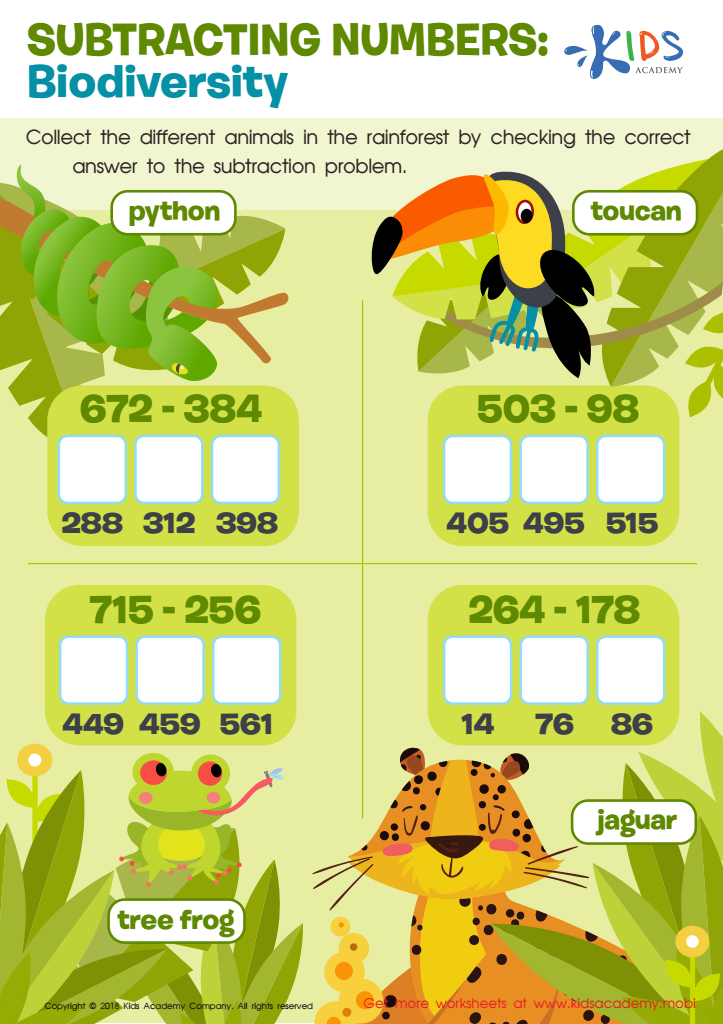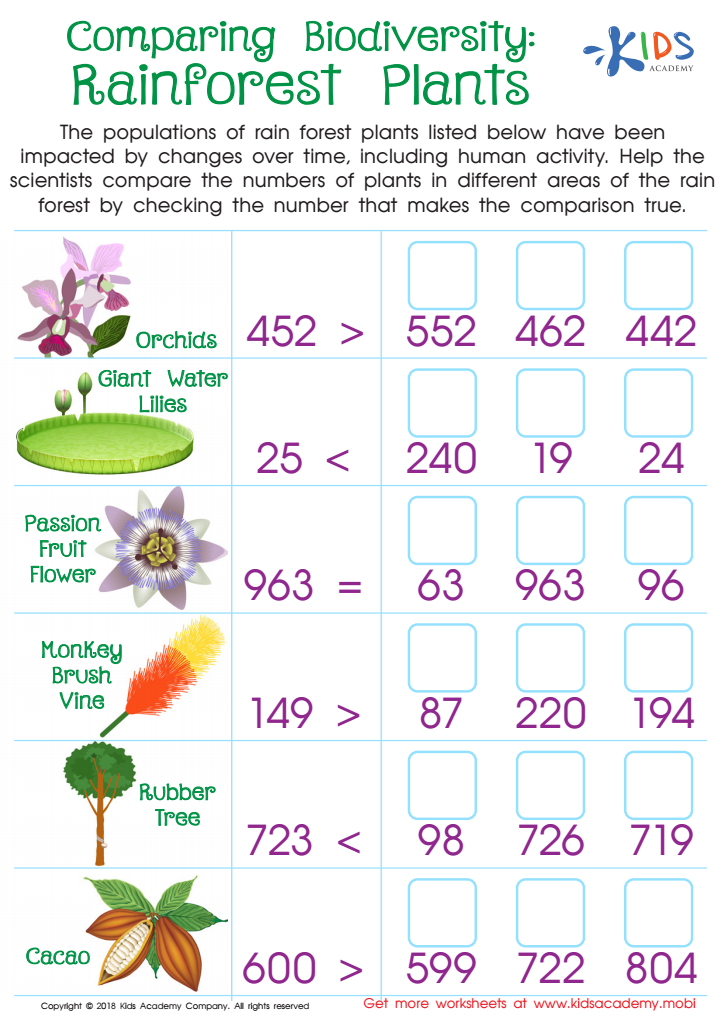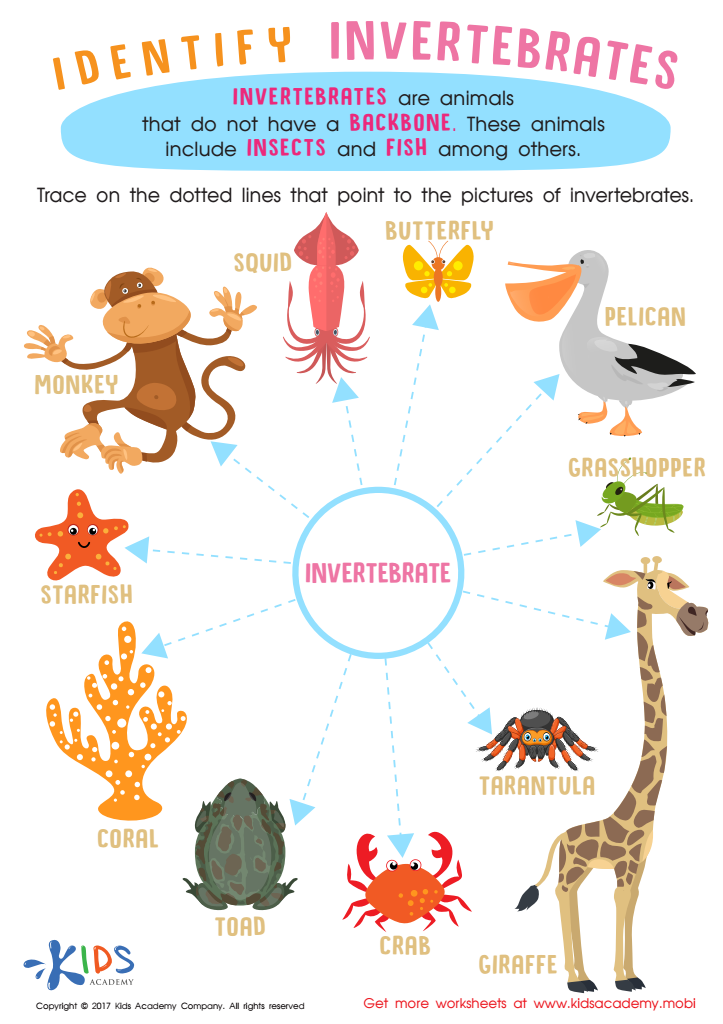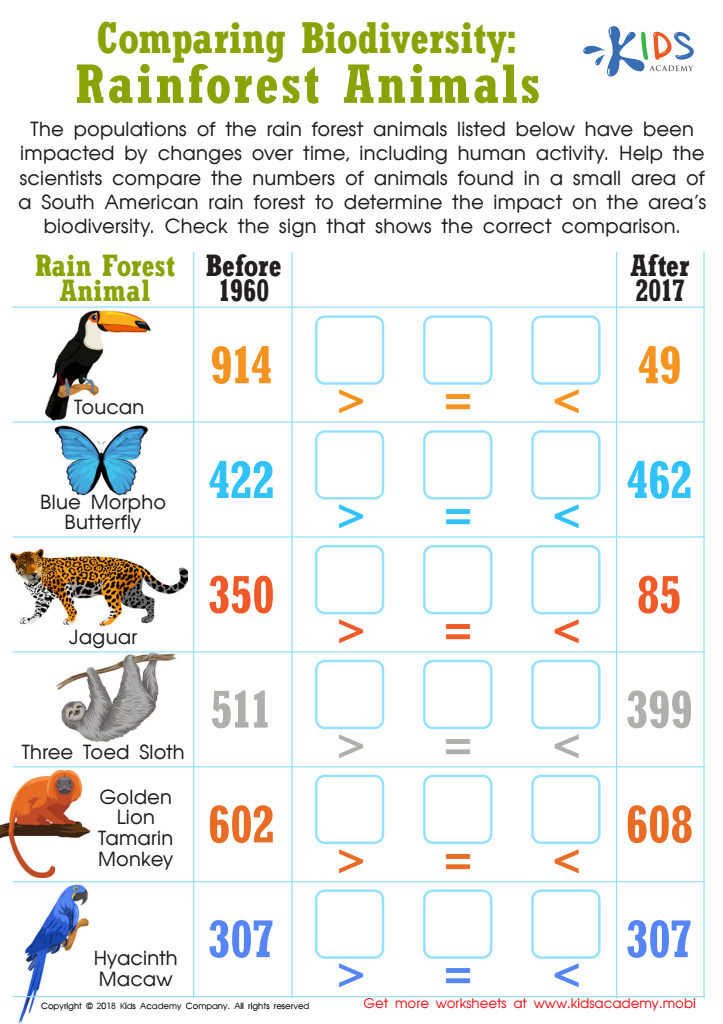Understanding biodiversity Worksheets for Kids
4 filtered results
-
From - To


Subtracting Numbers: Biodiversity Worksheet


Comparing Biodiversity: Rainforest Plants Worksheet


Invertebrates Worksheet for Grade 3


Comparing Biodiversity: Rainforest Animals Worksheet
Question/Answer
What are some effective activities to train students’ Understanding biodiversity skill when teaching them about Addition & Subtraction?
Incorporate activities that blend math with ecology, such as creating and analyzing graphs of different species populations, calculating biodiversity indexes from sample data, and exploring addition and subtraction through scenarios involving changes in local ecosystems (e.g., adding/subtracting species due to various factors). These activities help students understand biodiversity while practicing their addition and subtraction skills in a real-world context.
Why is the Understanding biodiversity skill important for Grade 2 students?
Understanding biodiversity is important for Grade 2 students because it helps them appreciate the variety of life on Earth, understand ecosystems, and recognize the importance of each species. This knowledge fosters respect for the environment and awareness of conservation needs from a young age, laying the foundation for responsible behavior towards nature and promoting sustainability values.
How does the mastery of the Understanding biodiversity skill affect a student's performance at an early age?
Mastery of the Understanding biodiversity skill at an early age enhances a student's cognitive, observational, and analytical abilities. It fosters an appreciation for ecological balance, encourages critical thinking about environmental issues, and promotes problem-solving skills related to sustainability.

 Assign to the classroom
Assign to the classroom












